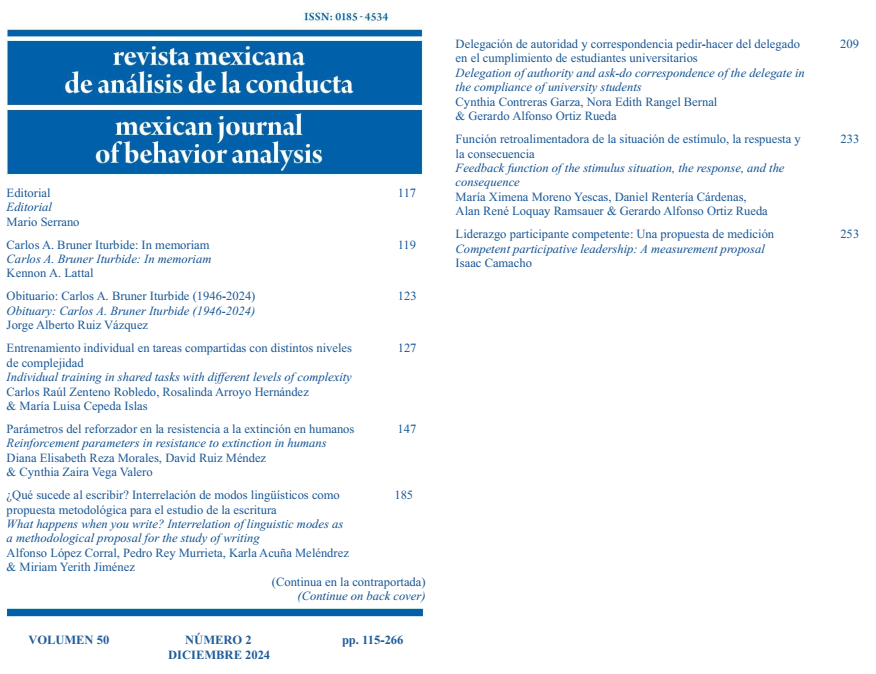Reinforcement parameters in resistance to extinction in humans
Main Article Content
Abstract
Resistance to extinction refers to the persistence of an operant after discontinuing the reinforcement associated with it. The Behavioral Momentum Theory indicates that an operant is more resistant to change when associated with a component with a greater frequency or magnitude of reinforcement. This has been consistently shown in non-human organisms. However, there are inconsistencies in the results obtained with humans that could be explained methodologically by the type of tasks and the type of reinforcements used in the experiments. The aim of this study was to analyze the effects of varying the frequency and magnitude of reinforcement under a resistance-to-extinction paradigm. Eighteen university students between 18 and 26 years old participated, distributed in three experiments. Results indicated that using a novel experimental task with precise instructions favors individual-level consistency with humans. However, it is important to verify the type of analysis been chosen.


